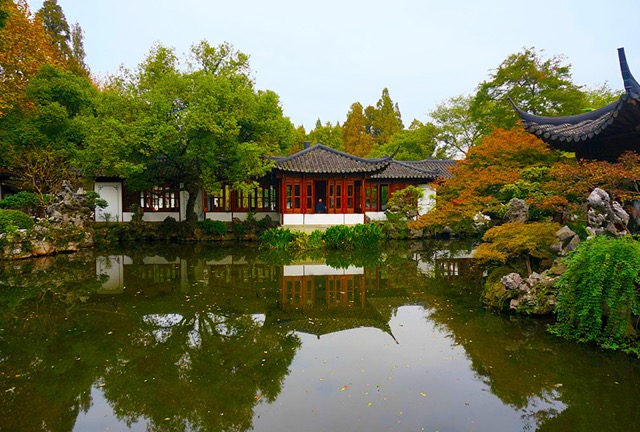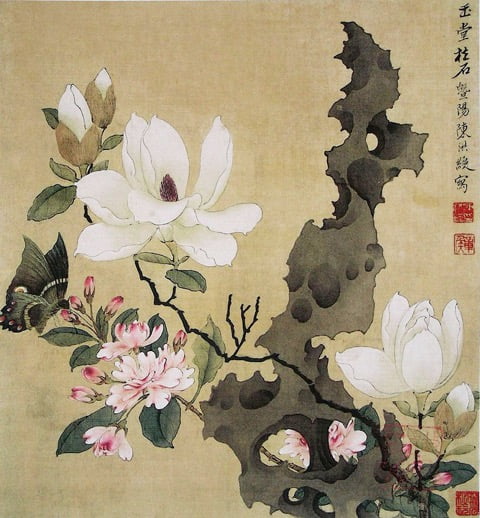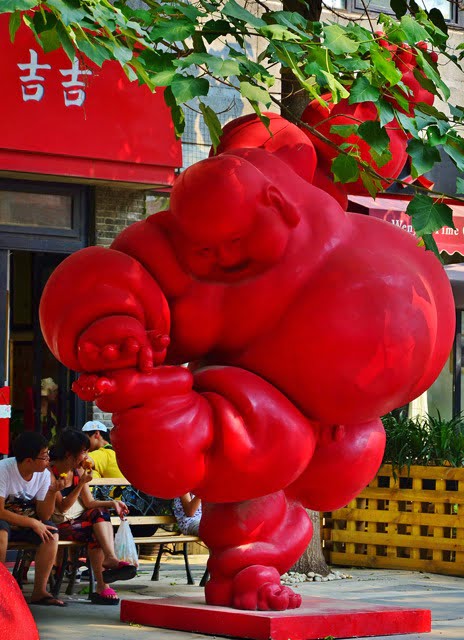Western thinking on garden history tends to be almost unconsciously European in focus – we might evoke the eighteenth century, and think of ha-has and arboreta, or perhaps a Renaissance Italian stroll garden, ornamented with classical statuary. But when mediaeval apothecaries were busy enclosing medicinal herbs in box compartments, one of our greatest cultures was quite literally moving mountains. In China, where the most exciting contemporary art is also to be found, gardens and art have been inextricably linked for almost two thousand years writes Genevieve Jacobs.
In the year AD 607, the Sui Emperor Ti reportedly used a million workers to create the Western Park near his capital of Lo Yang, “transforming earth and rocks to hills, while the ground was excavated for five lakes and four seas”. While Europe laboured through the Dark Ages, China was evolving a highly refined aesthetic in which the wild landscape was echoed and transformed by superbly restrained designs on all scales.
While the mighty created entire worlds on their estates, town courtyards became sanctuaries where water, rocks and a restricted palette of symbolic plants reflected nature, bringing it into perfect harmony for the meditative observer. Powerful scenery like that of the Huangshan Yellow Mountains with their vertical rocks, twisted pines and floating clouds has long been venerated and reflected in this way.
In Hangzhou, the ingenious West Lake freshwater system also includes islands and canals described by Marco Polo in 1280. He wrote of seeing “all its grandeur and beauty, its palaces, temples, convents and gardens, with trees of the largest size growing down to the water’s edge”…as passengers in gaily painted private pleasure boats feast their eyes on the variety and beauty of the scenes…” – a daily occurrence still today.
This Hangzhou gardening tradition has continued for more than a millennium: at Guozhuang, the celebrated private retreat of a wealthy silk merchant was completed in the mid-19th century. Wandering through the “Sky in the Mirror” section, visitors could pause at scenic spots including the “Hall of Plum Blossom and Snow Sharing Spring”, or the “Loft of Riding the Wind and Inviting the Moon”.
Gardens were closely connected in the classical tradition with painting and poetry, creating a multi-layered dream of perfection that scholars yearned after. The oldest Chinese stories are about the Isles of the Blessed, where immortals lived. Garden-making, scroll painting and classical poetry all return again and again to this vision.
Similar intentions to distil the essence of the landscape influence the Garden of the Humble Administrator in Suzhou, which is listed on the UNESCO World Heritage register. The site dates in its earliest incarnation from the 12th century and in its current form from the 16th. The design includes a great lake ringed by groves of sinuous, mottle barked crepe myrtles and a “Surging Wave” pond and islets, alluding to the mythical islands of the eastern seas and filled with more than 700 penjing specimens – literally “potted scenery”.
While Chinese horticultural practice is expert, design predominates over a riot of colour and species. This is despite the extraordinary richness of Chinese botany which has so strongly influenced Western planting. There is evidence that advanced techniques including air layering, complex grafting, advanced specimen transplants and greenhouse forcing for display have all been practised for 1000 years or more, but these are generally directed at the greater aim of achieving balance and harmony. The sheer technical skill, however, often makes it difficult to tell exactly how old a garden is.
In modern China rapid change has, paradoxically, enhanced the value placed on this tradition whose legacy was in danger of being destroyed during the upheavals of the past century. Historical sites once neglected have now been restored and are celebrated as symbols of the depth of Chinese intellect and culture.
Sometimes, too, the tradition is subverted and re-shaped by contemporary artists at the cutting edge. In Beijing, the Forbidden City and Summer Palace co-exist with the likes of the 798 Art Space district, where 50-year-old decommissioned military buildings have been turned into a thriving hub of galleries, studios and ambitious installations that interrogate cultural traditions. This is even more so in Shanghai, a futuristic city and home to the Shanghai Biennale, where a long exposure to trade means that the tension between state and arts culture is constantly tested.
Visiting China is an intoxicating opportunity to have your eyes opened, your senses stimulated and your gardening horizons expanded to infinity.
This article was originally published on Garden Drum and is republished here under Creative Commons.





























Add Comment